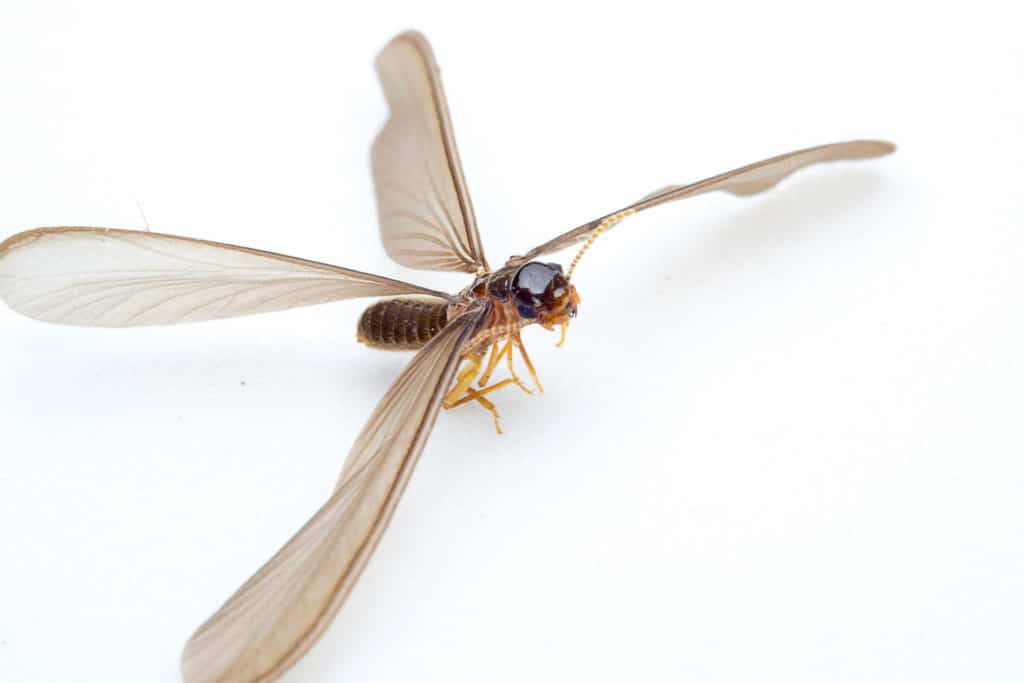It’s a Bird, It’s a Plane, It’s a… Swarm of Termites?!
It’s a Bird, It’s a Plane, It’s a… Swarm of Termites?!
Termites Can Fly?
Termite colonies are divided into three different types: workers, soldiers and reproductives. Each divided group physically matures differently from the others due to pheromones so that they are all properly outfitted to perform their necessary duties for the colony. Both workers and soldiers are sterile while the reproductives (true to their name) have the ability to help produce offspring. Similar to their distant cousins the ants, these termite reproductives are the only ones within a colony that have wings… but they don’t always have wings.
As they are first developing, reproductives will have small little wing “stumps” or wing “buds.” By the time they have matured into their alate stage, their wings are fully formed. Alates will leave their colonies in groups of hundreds or thousands in order to find a new place to mate and form a colony. Following the mating process their wings fall off. These newly wingless reproductives are called de-alates, and have one final transformation to make into their fully mature forms: kings and queens.

Winged Termites VS. Winged Ants
Both reproductive termites and ants are referred to as alates and have two sets of wings. However, there are several physical attributes that can help you identify the these two very similar insects.
Ant Alates –
Wing Sizes – Flying ants have two sets of wings. The first pair (closest to the ant’s head) are rather large, while the second pair (lower down on their abdomen) are far smaller – almost half the length of the front wings.
Wing Veins – Upon close inspection, tiny veins are visible within their wings. However, these veins are difficult to see as they are clear/transparent.
Body Shapes – The thorax and abdomen of reproductive ants have a clear separation as the body tapers in, creating the appearance of a small cinched waist.
Termite Alates –
Wing Sizes – Both sets of termite wings are roughly the exact same size and shape.
Wing Veins – The veins in their wings are visible due to their milky-white color.
Body Shapes – The thorax and abdomen are connected broadly, making them a bit difficult to tell them apart.

Termite Swarms
Termite swarms normally take off in numbers of several hundred to several thousand. They tend to take flight in spring when the weather is warming up and moisture is readily available due to seasonal rainfall.
Professional intervention is highly recommended when it comes to termite infestations. Because of how destructive and dangerous the pests can be, it is important to eliminate them quickly and effectively, which requires special equipment and skills. Our technicians have years of experience fighting termites and are equipped with the right tools and knowledge to successfully tackle any termite problem you may have.

Citations
Davis, M. (2008) Winged Ants and Termites in the House, The Department of Entomology of Kansas State University. Available at: https://entomology.k-state.edu/extension/diagnostician/lab-news/winged-ants-vs-termites.html (Accessed: October 2020).
Potter, M. (2018) Termite Control, The University of Kentucky College of Agriculture, Food and Environment. The Department of Entomology at the University of Kentucky. Available at: https://entomology.ca.uky.edu/ef604 (Accessed: October 2020).
Schneider, M. (1999) Termite Life Cycle and Caste System, Freiburg University. Available at: https://www.fzi.uni-freiburg.de/InsectPestKey-long%20version/termit2.htm (Accessed: October 22, 2020).

